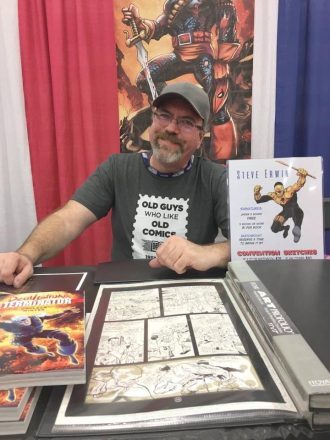
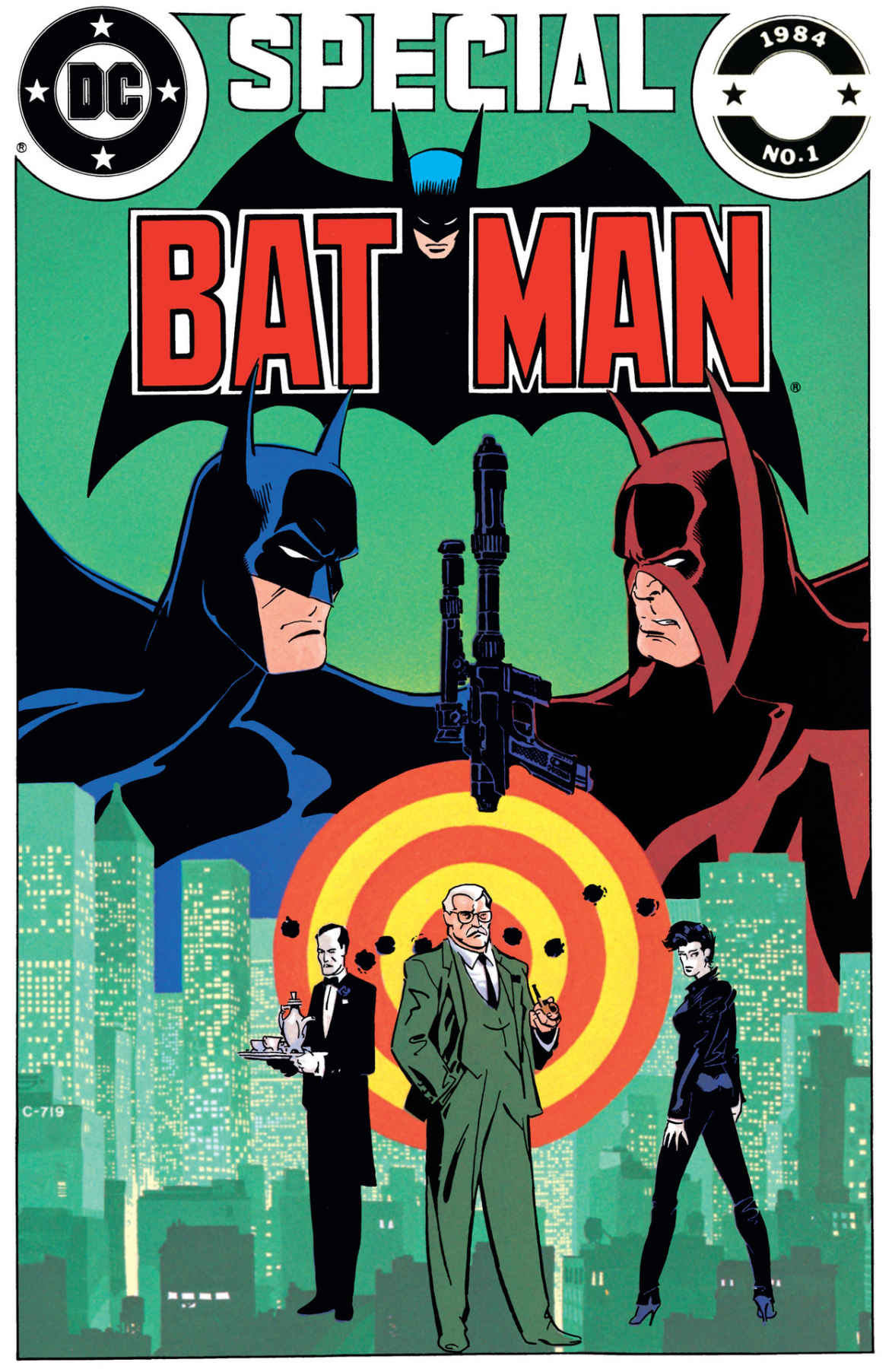

Books in series

Batman vs. The Incredible Hulk
1982

Batman (1940-2011) #1
Special
1984

Batman
Son of the Demon
1987

Batman
The Killing Joke
1988

Batman
Gotham by Gaslight
1989

Batman
Arkham Tımarhanesi
1989

Batman
The 1989 Movie Adaptation
1989

Batman
Bride of the Demon
1990

Batman
Digital Justice
1990

Batman
Full Circle
1990

Batman
Holy Terror
1991

Batman
Master of the Future
1991

Batman & Dracula
Red Rain
1991

Penguin Triumphant
1992

Batman
Birth of the Demon
1992

Batman
The Blue, the Grey, and the Bat
1992
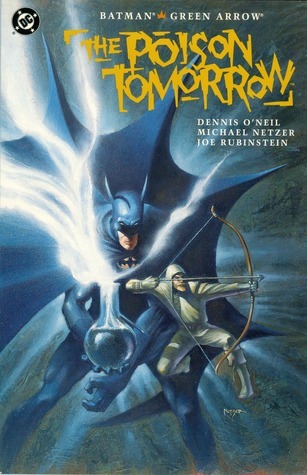
Batman/Green Arrow
The Poison Tomorrow
1992
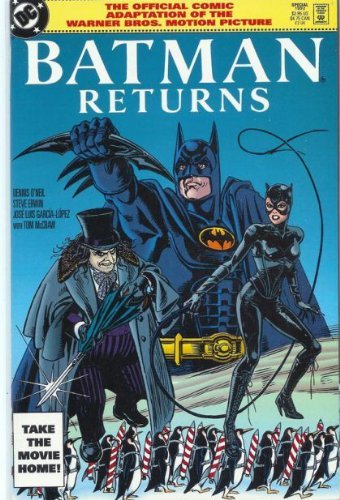
Batman Returns
the Official Comic Adaptation of the Warner Bros. Motion Picture
1992

Batman
Vengeance of Bane #1
1993

Batman
Dark Joker - The Wild
1993

Batman
Mask of the Phantasm
1993
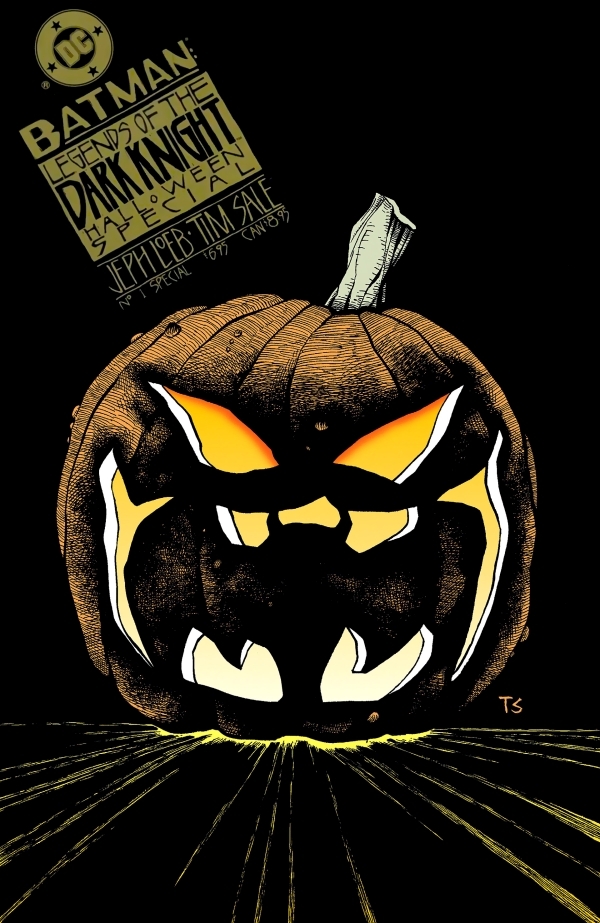
Batman
Legends of the Dark Knight Halloween Special #1
1993

The Batman Adventures
Mad Love
1993

Bloodstorm
The Chilling Sequel to Batman
1994

Batman
Castle of the Bat
1994

Batman
In Darkest Knight
1994

Batman
The Last Angel
1994

Batman
Legends of the Dark Knight Halloween Special #2
1994

The Batman Adventures Holiday Special #1
1994
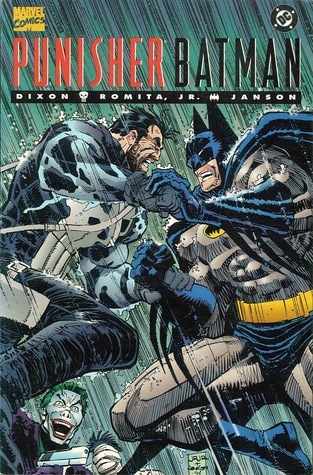
Punisher/Batman
Deadly Knights #1
1994
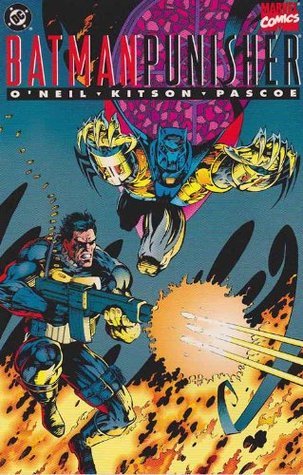
Batman/Punisher
Lake of Fire #1
1994
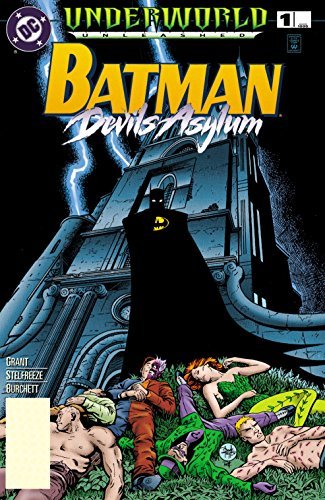
Underworld Unleashed
Batman - Devil's Asylum #1
1995

Batman
Brotherhood of the Bat
1995

Batman
Legends of the Dark Knight Halloween Special #3
1995

Batman
Mitefall
1995

Batman
Vengeance of Bane II: The Redemption
1990

Batman
Riddler
1995

Batman
Two-Face - Crime and Punishment
1995

Joker
Devil's Advocate
1996

Batman
Dark Allegiances
1996

Batman
Scar of the Bat
1996
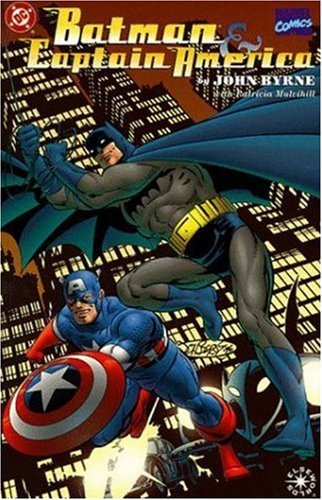
Batman/Captain America
1997
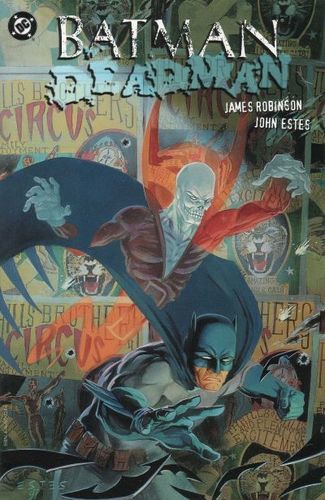
Batman/Deadman
Death and Glory
1996

Batman
Demon
1996

Batman and Superman Adventures
World's Finest
1997

Batman
Bane
1997

Batman
Batgirl
1997

Batman
Mr Freeze
1997

Batman
Poison Ivy
1997

Batman Chronicles
The Gauntlet #1
1997

Batman
Dark Knight Dynasty
1998

Batman
Masque
1997

Batman
Phantom Stranger
2000

Arkham Asylum
Tales of Madness
1998

Batman
Crimson Mist
1998

Batman
I, Joker
1998

Batman
Reign of Terror
1999

Batman
Scottish Connection
1998

Batman + Batgirl
Thrillkiller '62
1998

Batman
Harley Quinn
1999

Batman
War on Crime
1999

Batman
The Chalice
1999

The Batman of Arkham
2000

Batman
Ego
2000

Batman
Harvest Breed
2000

Superman and Batman
World's Funnest #1
2000

Realworlds
Batman
2000

Batman
Gotham Noir
2001

Batman
The 10 Cent Adventures #1
2002

Batman
Nine Lives
2002

Batman
Absolution
2003

Batman
Child of Dreams
2000

Batman
Hong Kong
2003

Planetary/Batman
Night on Earth
2003

Batman
The Golden Streets of Gotham
2003

Batman/Joker
Switch
2003

Batman and Poison Ivy
Cast Shadows
2004

Batman
The Order of Beasts
2004
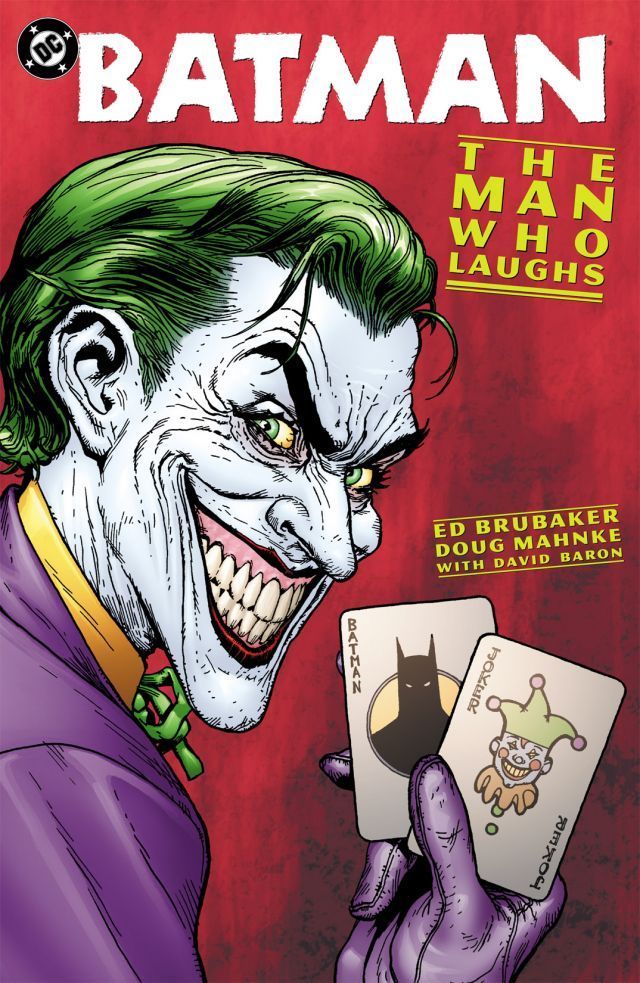
Batman
The Man Who Laughs #1
2005

Batman Begins
The Movie And Other Tales Of The Dark Knight
2005
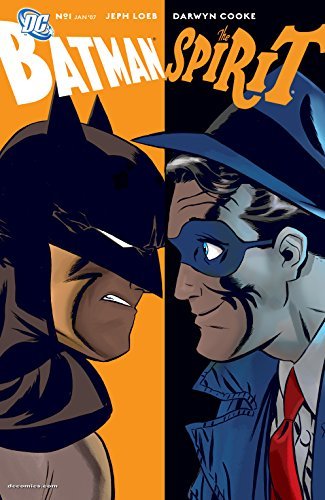
Batman/The Spirit (2007) #1
2008

Batman and the Outsiders
Special
2009
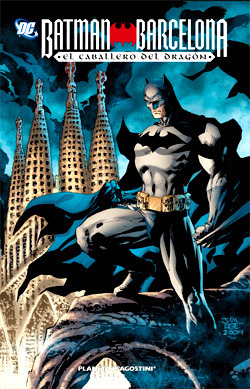
Batman
Barcelona, el caballero del dragón
2009

Batman
Battle for the Cowl Companion
2009
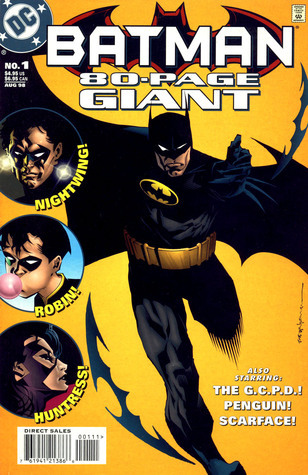
Batman 80-Page Giant #1
1998

Batman
The Return #1
2010

Batman 80-Page Giant 2010
2010

Batman 80-Page Giant 2011
2011

Batman
Noël
2011

Batman
Through the Looking Glass
2012

Batman Incorporated (2010-2011) Leviathan Strikes! #1
2011

Batman
Death by Design
2012

Batman
Joker's Daughter (2014) #1
2014
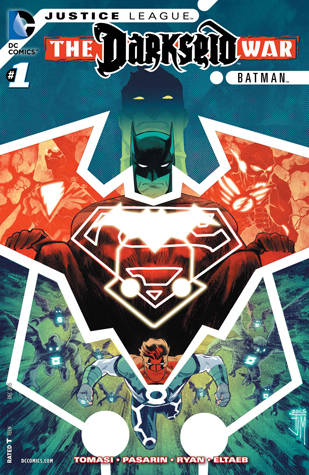
Justice League
Darkseid War: Batman (2015) #1
2015

Batman/Elmer Fudd Special #1
2017

Batman
The Red Death #1
2017

Batman
The Murder Machine #1
2017

Batman
The Dawnbreaker #1
2017

Batman
The Drowned #1
2017

Batman
The Merciless #1
2017

Batman
The Devastator #1
2017

The Batman Who Laughs #1
2019
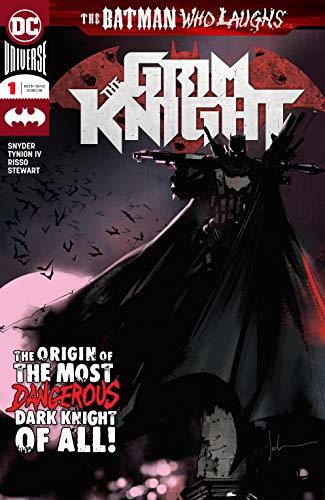
The Batman Who Laughs
The Grim Knight #1
2019
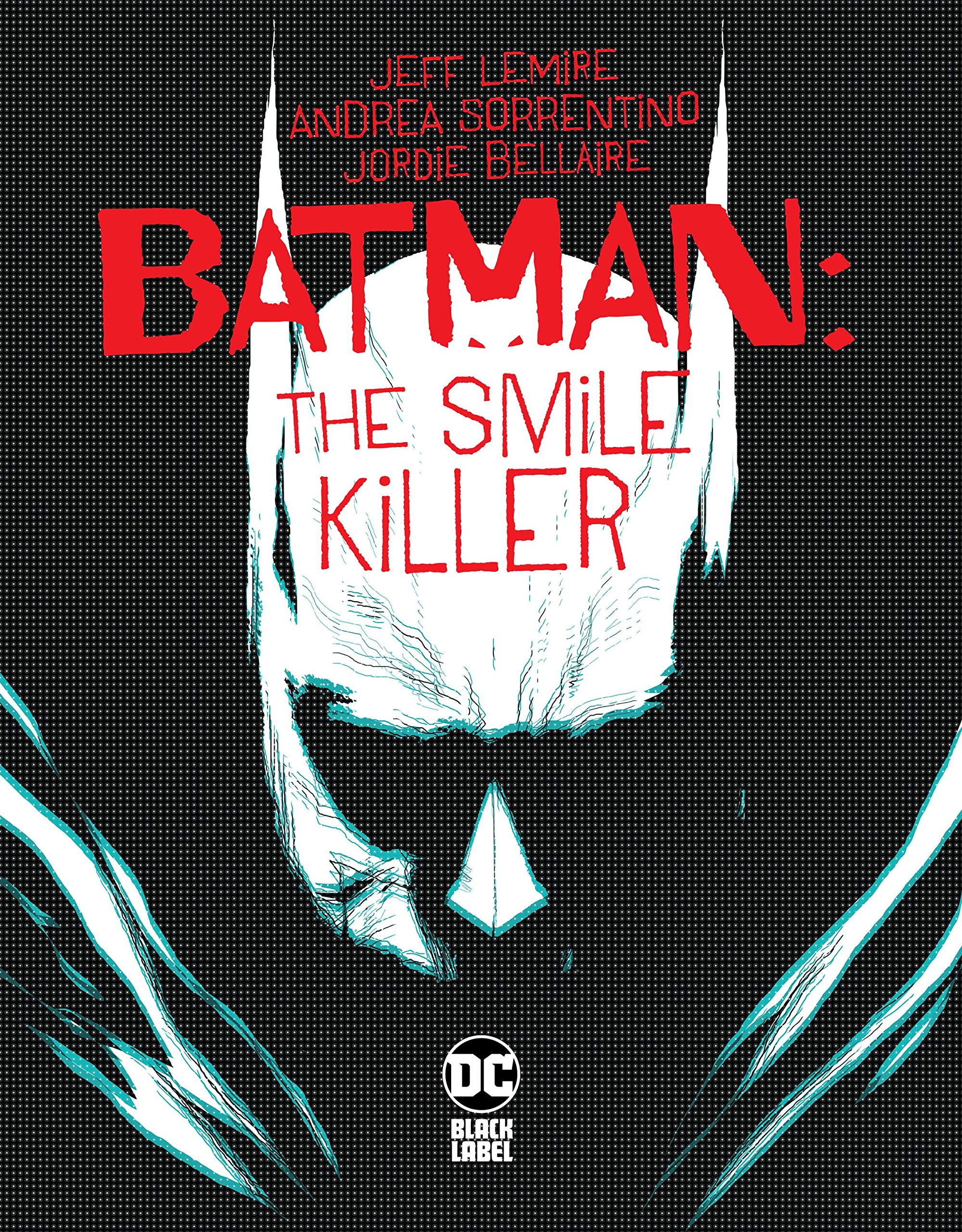
Batman
The Smile Killer
2020

Dark Knight Returns
The Golden Child
2019
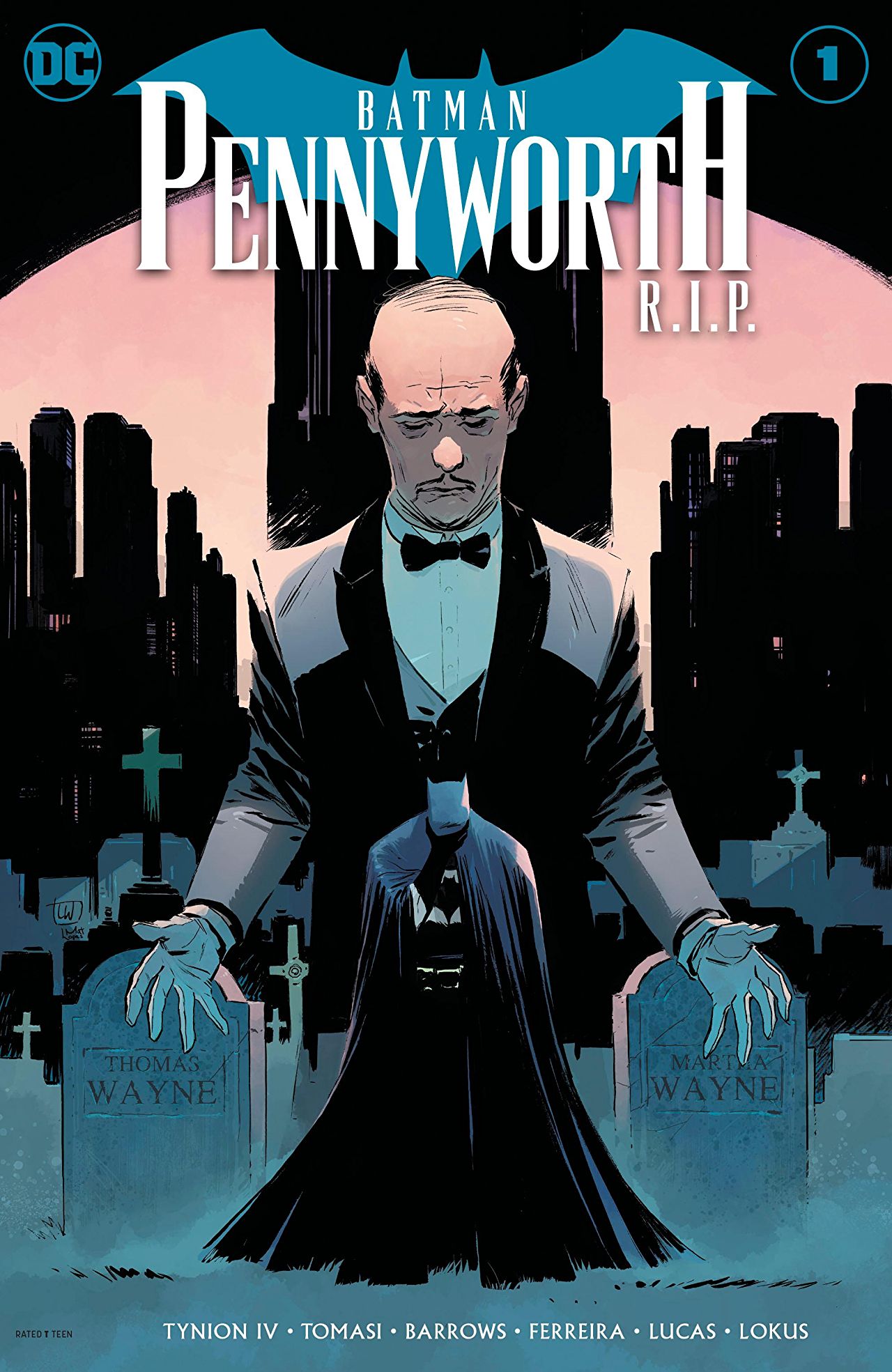
Batman
Pennyworth R.I.P. #1
2020

Batman
The Joker War Zone #1
2020
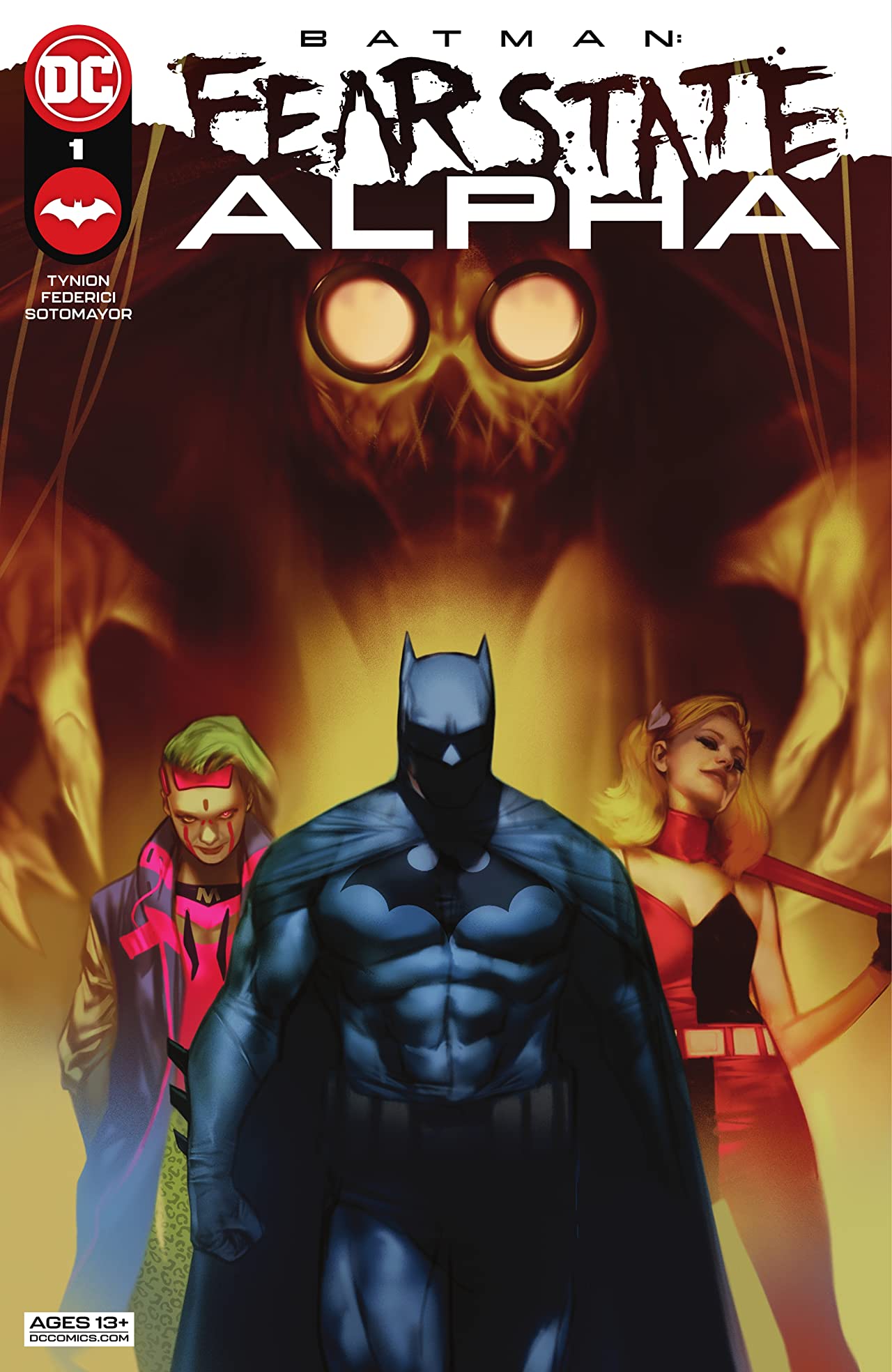
Batman
Fear State - Alpha #1
2021

Batman
The Long Halloween Special #1
2021
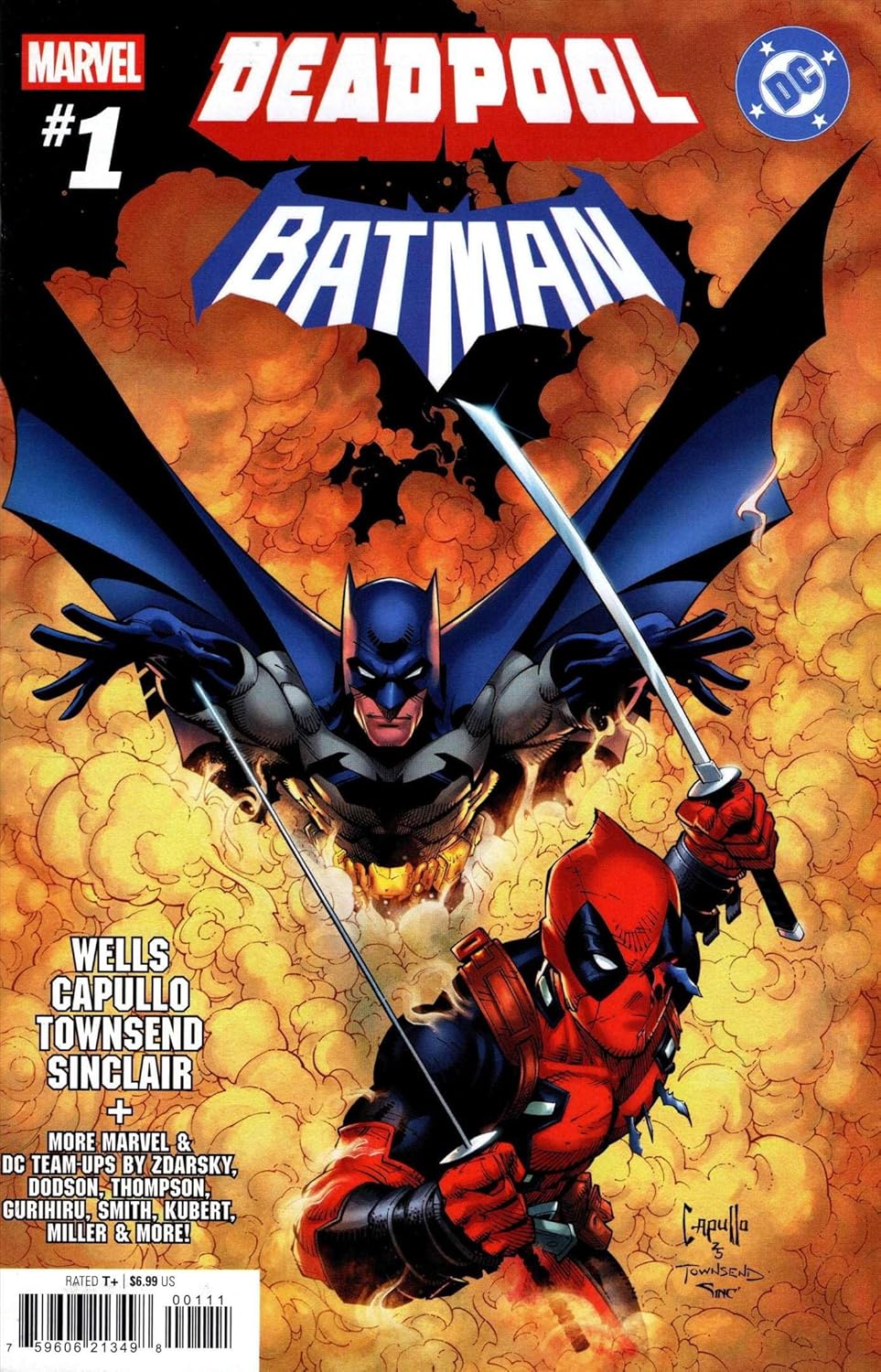
Deadpool/Batman
2025
Authors

Kia Asamiya(麻宮 騎亜, born in 1963) is the pen-name of a popular Japanese manga artist whose work spans multiple genres and appeals to diverse audiences (1990s). He is well-known for using influences from American comics, television, and movies in his work, and describes himself as a big fan of both Batman and Star Wars. One of the most widely-published Japanese manga-ka, nearly all of his stories have been translated into other languages, including English. His two most successful and popular manga series to-date are Nadesico and Silent Möbius. Prior to becoming a manga artist, Asamiya graduated from the Tokyo Designer School, and then worked as a character designer for a number of anime series, and even designed models for some of the later Godzilla movies (1980s). For this career, he used a different pen-name, Michitaka Kikuchi (菊地 道隆), and maintained the two professional identities separately for many years. Several of the anime series that he worked on were very popular both inside and outside of Japan, most notably including Sonic Soldier Borgman. Even after focusing primarily on his manga career, Asamiya continued to do character designs and creative consultation on anime series based on his stories, occasionally under the Kikuchi name. In the early 2000s, Asamiya has shifted his focus from teenage and young-adult stories to stories designed for children and for an American audience. In the former case, he credits his young children as a motivation, but in the latter case, he points to a long-standing desire to work with his favorite American characters. To that end, he has worked on projects with Image Comics, Marvel Comics, and DC Comics, as well as developing a manga adaptation of the movie, "Star Wars: The Phantom Menace". While many Japanese artists (and artists in general) are quite reclusive, Asamiya often makes an effort to be available to his fans. He maintains a website with news and information about his studio, Studio TRON (named after the Disney movie TRON). He also aids and assists his Official Fan Club by sending them regular announcements and limited-edition merchandise. Despite these actions, he shunned all public photography, and had the often-hilarious habit of depicting himself with a placeholder sign for a face. It has become a trademark feature of his books that instead of a picture of the artist, there is an elaborately decorated rectangle sporting the words "Now Printing".


Augustyn got his start in the industry in 1986 as an editor for Tru Studios' Trollords. He then edited Syphons and Speed Racer for NOW Comics in 1987. In 1988, he joined DC, starting out as a co-editor on Action Comics during its period as a weekly title. During the late 1980s and early 1990s Augustyn was an editor for DC Comics, where he edited The Flash, Justice League and the Impact Comics line of titles. Augustyn was recognized for his work in the industry with the Wizard Fan Award for Favorite Editor in 1994. He served as the managing editor of Visionary Comics Studio. As editor of The Flash beginning in 1989, Augustyn brought in Mark Waid as writer in 1992, which led to an acclaimed eight-year run. Under Augustyn's stewardship, the Flash was brought out from the shadow of his predecessors and increased his powers dramatically. Other Augustyn-Waid editor-writer partnerships included The Comet (DC/Impact, 1992) and Impulse (DC, 1995–1996). Augustyn currently works as story editor for publisher Red Giant Entertainment and their Giant-Size Comics line of free print comic book titles which debuted on May 3, 2014 as part of Free Comic Book Day.[

Joseph "Jeph" Loeb III is an Emmy and WGA nominated American film and television writer, producer and award-winning comic book writer. Loeb was a Co-Executive Producer on the NBC hit show Heroes, and formerly a producer/writer on the TV series Smallville and Lost. A four-time Eisner Award winner and five-time Wizard Fan Awards winner (see below), Loeb's comic book career includes work on many major characters, including Spider-Man, Batman, Superman, Hulk, Captain America, Cable, Iron Man, Daredevil, Supergirl, the Avengers, and Buffy the Vampire Slayer, much of which he has produced in collaboration with artist Tim Sale, who provides the comic art seen on Heroes.

Librarian note: There is more than one author in the GoodReads database with this name John Lindley Byrne is a British-born Canadian-American author and artist of comic books. Since the mid-1970s, Byrne has worked on nearly every major American superhero. Byrne's better-known work has been on Marvel Comics' X-Men and Fantastic Four and the 1986 relaunch of DC Comics’ Superman franchise. Coming into the comics profession exclusively as a penciler, Byrne began co-plotting the X-Men comics during his tenure on them, and launched his writing career in earnest with Fantastic Four (where he also started inking his own pencils). During the 1990s he produced a number of creator-owned works, including Next Men and Danger Unlimited. He also wrote the first issues of Mike Mignola's Hellboy series and produced a number of Star Trek comics for IDW Publishing.
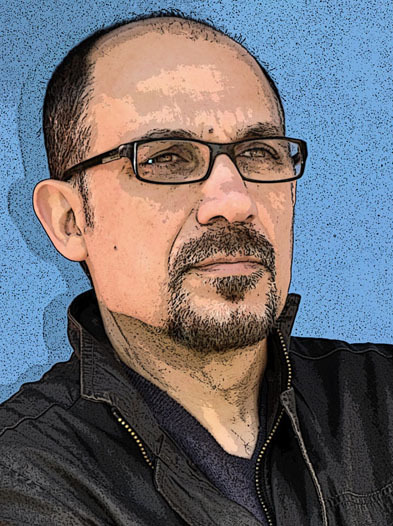



Dean Motter is an illustrator, designer and writer who worked for many years in Toronto, Canada, New York City, and Atlanta. Motter is best known as the creator and designer of Mister X, one of the most influential "new-wave" comics of the 1980s. Dean then took up the Creative Services Art Director's post at Time Warner/DC Comics, where he oversaw the corporate and licensing designs of America’s most beloved comic book characters such as Superman, Batman and Wonder Woman. In his off-hours he went on to create and design the highly acclaimed, retro-futuristic comic book series, Terminal City—and its sequels, Aerial Graffiti. and Electropolis.
Len Wein was an American comic book writer and editor best known for co-creating DC Comics' Swamp Thing and Marvel Comics' Wolverine, and for helping revive the Marvel superhero team the X-Men (including the co-creation of Nightcrawler, Storm, and Colossus). Additionally, he was the editor for writer Alan Moore and illustrator Dave Gibbons' influential DC miniseries Watchmen. Wein was inducted into the Will Eisner Comic Book Hall of Fame in 2008.


Bob Kane (born Robert Kahn; October 24, 1915 – November 3, 1998) was an American comic book artist and writer, credited along with Bill Finger as the creator of the DC Comics superhero Batman. He was inducted into both the comic book industry's Jack Kirby Hall of Fame in 1994 and the Will Eisner Comic Book Hall of Fame in 1996. http://en.wikipedia.org/wiki/Bob_Kane




Chip Zdarsky is a Canadian comic book artist and journalist. He was born Steve Murray but is known by his fan base as Chip Zdarsky, and occasionally Todd Diamond. He writes and illustrates an advice column called Extremely Bad Advice for the Canadian national newspaper National Post's The Ampersand, their pop culture section's online edition. He is also the creator of Prison Funnies and Monster Cops. Source: Wikipedia.


KELLY THOMPSON has a degree in Sequential Art from The Savannah College of Art & Design. Her love of comics and superheroes have compelled her since she first discovered them as a teenager. Currently living in Portland, Oregon with her boyfriend and the two brilliant cats that run their lives, you can find Kelly all over the Internet where she is generally well liked, except where she's detested. Kelly has published two novels - THE GIRL WHO WOULD BE KING (2012) and STORYKILLER (2014) and the graphic novel HEART IN A BOX from Dark Horse Comics (2015). She's currently writing ROGUE & GAMBIT, HAWKEYE, and PHASMA for Marvel Comics and GHOSTBUSTERS for IDW. Other major credits include: A-Force, Captain Marvel & The Carol Corps, Jem and The Holograms, Misfits, Power Rangers Pink, and the creator-owned mini-series Mega Princess. Kelly's ambitions are eclipsed only by her desire to exist entirely in pajamas. Fortunately pajamas and writers go hand in hand (most of the time). Please buy all her stuff so that she can buy (and wear) more pajamas.

Ed Brubaker (born November 17, 1966) is an Eisner Award-winning American cartoonist and writer. He was born at the National Naval Medical Center, Bethesda, Maryland. Brubaker is best known for his work as a comic book writer on such titles as Batman, Daredevil, Captain America, Iron Fist, Catwoman, Gotham Central and Uncanny X-Men. In more recent years, he has focused solely on creator-owned titles for Image Comics, such as Fatale, Criminal, Velvet and Kill or Be Killed. In 2016, Brubaker ventured into television, joining the writing staff of the HBO series Westworld.

Peter J. Tomasi is an American comic book writer, best known for his work for DC Comics, such as Batman And Robin; Superman; Super Sons; Batman: Detective Comics; Green Lantern Corps; and Superman/Wonder Woman; as well as Batman: Arkham Knight; Brightest Day; Green Lantern: Emerald Warriors; Nightwing; Black Adam, and many more. In the course of his staff career at DC Comics, Tomasi served as a group editor and ushered in new eras for Batman, Green Lantern, and the JSA, along with a host of special projects like Kingdom Come. He is also the author of the creator-owned titles House Of Penance with artist Ian Bertram; Light Brigade with artist Peter Snejbjerg; The Mighty with Keith Champagne and Chris Samnee; and the critically acclaimed epic graphic novel The Bridge: How The Roeblings Connected Brooklyn To New York, illustrated by Sara DuVall and published by Abrams ComicArts. In 2018 New York Times best-selling author Tomasi received the Inkpot Award for achievement in comics.

Eric Van Lustbader was born and raised in Greenwich Village. He is the author of more than twenty-five best-selling novels, including The Ninja, in which he introduced Nicholas Linnear, one of modern fiction's most beloved and enduring heroes. The Ninja was sold to 20th CenturyFox, to be made into a major motion picture. His novels have been translated into over twenty languages. Mr. Lustbader is a graduate of Columbia College, with a degree in Sociology. Before turning to writing full time, he enjoyed highly successful careers in the New York City public school system, where he holds licenses in both elementary and early childhood education, and in the music business, where he worked for Elektra Records and CBS Records, among other companies. http://us.macmillan.com/author/ericva...


Marshall Rogers studied architectural drawing, and his work was characterized by the depiction of characters with relatively human proportions rather than exaggerated musculature, and by detailed rendering of buildings and structures. Some of his first comic-book work appeared in the black-and-white magazine The Deadly Hands of Kung Fu, where he worked with writer Chris Claremont on a story featuring the "Iron Fist" supporting characters Misty Knight and Colleen Wing as the Daughters of the Dragon. He eschewed the grey wash that was used in other black-and-white comics stories in favour of applying screentone. With writer Steve Englehart, Rogers penciled an acclaimed run on the character Batman in Detective Comics #471-476 (Aug. 1977 - April 1978), providing one of the definitive interpretations that influenced the 1989 movie Batman and be adapted for the 1990s animated series. He also penciled the origin story of the Golden Age Batman in Secret Origins #6 (Sept. 1986) with writer Roy Thomas and inker Terry Austin. The two also did a sequel miniseries, Batman: Dark Detective, and had worked together on other series, such as The Silver Surfer. Also striking was Rogers' short run on DC's revived "Mister Miracle" series. Englehart and Rogers' first Batman run was collected in the trade paperbacks Batman: Strange Apparitions and the second run, Batman: Dark Detective. He did independent work at Eclipse Comics and others. This included the first Coyote series with Englehart, and his own Capt. Quick and the Foozle. Portrait by: Marshall Rogers

Michael Lark is an American comics artist and colorist. Lark has provided pencils for DC Comics' Batman, Terminal City, Gotham Central and Legend of the Hawkman. His work for Marvel Comics includes The Pulse and Captain America. He created Lazarus with Greg Rucka, contributing to every issue.

Darwyn Cooke was an Eisner Award winning comic book writer, artist, cartoonist and animator, best known for his work on the comic books Catwoman, DC: The New Frontier and Will Eisner's The Spirit. In 1985, Cooke published his first comic book work as a professional artist in a short story in New Talent Showcase #19, but economic pressure made him leave the career and he worked in Canada as a magazine art director, graphic and product designer for the next 15 years. In the early 1990s Cooke decided to return to comics, but found little interest for his work at the major publishers. Eventually he was hired by Warner Bros. Animation after replying to an ad placed by animator Bruce Timm. He went on to work as a storyboard artist for Batman: The Animated Series and Superman: The Animated Series, and in 1999 he animated the main title design for Batman Beyond. He then worked as a director for Sony Animation's Men in Black: The Series for a year. DC Comics then approached Cooke about a project which he had submitted to the publisher years earlier which eventually became Batman: Ego, a graphic novel published in 2000. The critical success of that project led to Cooke taking on more freelance work, such as X-Force, Wolverine/Doop and Spider-Man's Tangled Web for Marvel Comics and Just Imagine... Stan Lee for DC. In 2001, Cooke and writer Ed Brubaker teamed up to revamp the Catwoman character. They started with a 4 issue serial "Trail of the Catwoman" in Detective Comics #759-762 in which private detective Slam Bradley attempts to investigate the death of Selina Kyle (AKA Catwoman). The story led into a new Catwoman title in late 2001 by Brubaker and Cooke, in which the character's costume, supporting cast and modus operandi were all redesigned and redeveloped. Cooke would stay on the series, which was met with critical and fan acclaim, up until issue #4. In 2002 he would write and draw a prequel, the Selina's Big Score graphic novel which detailed what had happened to the character directly before her new series. Cover to DC: The New Frontier #6. Cover to DC: The New Frontier #6. Cooke's next project was the ambitious DC: The New Frontier (2004), a six issue miniseries which sought to tell an epic storyline bridging the gap between the end of the golden and the start of the silver age of comic books in the DC Universe. The story, which was set in the 1950s, featured dozens of super-hero characters and drew inspiration from the comic books and movies of the period as well as from Tom Wolfe's non-fiction account of the start of the US Space Program The Right Stuff. The major DC characters are introduced in "The New Frontier" in the same order that DC originally published them, even down to the correct month and year in the story's timeline. In 2005, Cooke won an Eisner Award for "Best Limited Series", and a Joe Shuster Award for "Outstanding Canadian Comic Book Cartoonist" for his work on the series. Most recently, Cooke contributed to DC's artist-centric anthology project Solo. His issue (#5, June, 2005) featured several different stories in different styles with a framing sequence featuring the Slam Bradley character. In 2006, Solo #5 won an Eisner Award for "Best Single Issue." In July 2005, it was announced that in 2006 Cooke and writer Jeph Loeb would produce a Batman/Spirit crossover, to be followed shortly afterwards by an ongoing Spirit series written and drawn by Cooke. Batman/The Spirit was ultimately published in November 2006, followed in December by the first issue of Cooke's The Spirit. In June 2007, Cooke and J. Bone won a Joe Shuster Award for "Outstanding Canadian Comic Book Artists" for their work on "Batman/The Spirit", and Cooke won "Outstanding Canadian Comic Book Cartoonist" for his work on "The Spirit". In July 2006, it was announced that Warner Bros. Animation and DC Comics would release a series of direct-to-DVD animated movies based on important DC com

Devin Grayson is an avid gamer, former acting student, and enthusiastic reader fortunate enough to have turned a lifelong obsession with fictional characters into a dynamic writing career. She has a B.A. from Bard College, where she studied creative writing with novelist Mona Simpson. Best known for her work on the Batman titles for DC Comics, Devin has been a regular writer on Catwoman, Nightwing, and The Titans, and contributed to the award-winning No Man’s Land story arc. With the publication of Batman: Gotham Knights in March of 2000, she became the first (and, sadly, only as of 2020) female to create, launch and write an ongoing Batman title. Additional career highlights include the launch of the critically acclaimed series Omni for Humanoids, Doctor Strange: The Fate of Dreams, an original novel featuring Marvel’s Sorcerer Supreme, and USER—a highly personal three-part, creator-owned miniseries about gender identity and online role-playing, originally published by Vertigo and newly available as a collected edition hardcover through Image. Devin is also the creator of Yelena Belova, a Marvel character staring in the upcoming MCU Black Widow movie (played by Florence Pugh), Damien Darhk, a DC character now appearing regularly in CW’s Arrow and Legends of Tomorrow (played by Neal McDonough), and Catalina Flores, a DC character recently featured as the super-villain Tarantula in The Lego Batman Movie. Frequently cited for compelling character development and nuanced exploration of complex themes, Devin’s work has been showcased in mainstream media such as USA Today and Working Woman as well as in alternative press such as The Village Voice, The Advocate, and Curve magazine. Over the years, she has written in several different media and genres, from comic books and novels to video game scripts and short essays. She is currently working on an original graphic novel for Berger Books. Devin lives in Northern California with her husband, step-son, devoted Early Alert Canines Diabetic Alert Dog, and somewhat less devoted cat. Openly bisexual, she is a passionate advocate for the GLBTQ community, as well as being a committed environmentalist, and a public speaker for T1 Diabetes awareness and Diabetic Alert Dogs. She is always happy to take on a new challenge, especially if it involves making some new fictional friends.

Robert "Bob" Hall is an American comics artist and writer as well as a playwright and theatre director. He is the co-creator of the West Coast Avengers for Marvel Comics and has worked on such series as Armed and Dangerous and Shadowman, which he both drew and wrote for Valiant Comics. According to his personal webpage: BOB HALL: WRITER, ARTIST, AND COMIC CREATOR I’ve worked in the comics industry for more than forty-five years, starting at Charlton Comics in 1974, illustrating horror stories and drawing covers. That same year I took a course in creating comics taught by the legendary John Buscema and at the end of the class, Buscema recommended me to Archie Goodwin, Editor-In-Chief at Marvel, as a penciler. I was immediately thrown into drawing a group book, The Champions, written by Bill Mantlo, who graciously mentored me through my first jobs. Over the next fifteen years, I drew most of Marvel’s Major books and characters, The Champions, Doctor Doom, the Red Skull, The Avengers, The West Coast Avengers, The Squadron Supreme, Spider-man, including Spider-Man meeting the original Saturday Night Live cast, Thor, Nick Fury, Moon Knight, one issue of The New Mutants, and What If Conan Were Trapped In the Twentieth Century, Part 2. I also did a slew of Movie adaptations including Willow, Dark Man, and arguably the worst superhero movie ever, the 1980s Captain America. On the other hand, check out the graphic novel, Emperor Doom, probably my best work for Marvel. In 1977, Jim Shooter, the new Editor-In Chief, offered me a job as one of a new group of sub-editors. I signed on for a six-month tenure since a stage adaptation I had co-authored, The Passion of Dracula, then running Off Broadway, was due to receive a West End production in London. There was no question that was going to be there for that. Those six months in the bullpen gave me opportunity of working with some of the most talented people in the comics field, Shooter, Stern, Salicrup, Giacoia, both Buscema’s, Colan, Janson, Rubenstein, Layton, Marie Severin, Byrne, Jo Duffy, Claremont, others too many to list. I learned more about making comics than any time before or since. Then in the 1990s, Jim Shooter started a new company, Valiant. Having seen a plays I had authored, he invited me to write and asked me to choose one of four different titles. For me, Shadowman had the most potential, set in New Orleans, featuring a musician and involving voodoo, all stuff I could dig into. I wrote and eventually drew the book for thirty-five issues. It was very successful but was eventually rebooted to support a video game while moved on to I create Armed and Dangerous, a crime series and probably my finest work in comics. It’s hard to find copies but well worth the effort. Then, in the late 1990s, the comics industry went to hell.

John Ridley IV (born October 1965)[2] is an American screenwriter, television director, novelist, and showrunner, known for 12 Years a Slave, for which he won an Academy Award for Best Adapted Screenplay. He is also the creator and showrunner of the critically acclaimed anthology series American Crime. His most recent work is the documentary film Let It Fall: Los Angeles 1982–1992. Librarian Note: There is more than one author in the Goodreads database with this name. This profile may contain books from multiple authors of this name.


Mike Grell (born 1947) is a comic book writer and artist. Grell studied at the University of Wisconsin-Green Bay, the Chicago Academy of Fine Art, and took the Famous Artists School correspondence course in cartooning. His entry into the comics industry was in 1972, as an assistant to Dale Messick on the Brenda Starr comic strip. In 1973 Grell moved to New York, and began his long relationship with DC Comics. His first assignment at DC was on Superboy and the Legion of Super-Heroes, a high-profile assignment for an artist with no prior experience illustrating a monthly comic book. Grell says he got that job because he was walking in the editor's door to ask for work, literally, as the previous artist was walking out the door, having just quit. These stories were written by Cary Bates and Jim Shooter. The Bates/Grell/Shooter run on the title is very well-regarded today by Superboy/Legion fans, who consider it one of the high-water marks in the character/team's history. Grell's work on SATLOSH is widely thought to be some of the best beefcake/cheesecake ever committed to comic book pages, and is affectionately referred to as the 'disco Legion' in retrospect by fans of the title. A writer as well as artist, Grell cemented his status as a fan-favorite with his best-known creation, The Warlord, one of the first sword and sorcery comics, and reportedly the best-selling title published by DC Comics in the late-1970s. The character first appeared in 1st Issue Special #8 (Nov 1975) and was soon given his own ongoing title (The Warlord #1, Jan/Feb 1976). In this book, Air Force pilot Travis Morgan crash-lands in the prehistoric "hidden world" of Skartaris (a setting highly influenced by Jules Verne's A Journey to the Center of the Earth and Edgar Rice Burroughs' Pellucidar). For years thereafter, Morgan engages in adventures dressed only in a winged helmet, wristbands, boots, and breechclout, and armed with a sword and (years before Dirty Harry handled one) a .44 Auto Mag. At DC, Grell also worked on titles such as Aquaman, Batman, and the Phantom Stranger, and with writer Dennis O'Neil on the re-launch of the Green Lantern/Green Arrow series in 1976. [edit] Tarzan Grell wrote and drew the Tarzan comic strip from July 19, 1981 to February 27, 1983 (except for one strip, February 13, 1983, by Thomas Yeates). These strips were rerun in newspapers in 2004 - 2005. [edit] First Comics: Jon Sable Freelance and Starslayer Cover to Jon Sable Freelance #7. Art by Mike Grell.Through the 1980s Grell developed creator-owned titles such Jon Sable Freelance and Starslayer. Jon Sable Freelance was published by the now-defunct First Comics. Starslayer, a space-born science fiction series, started at Pacific Comics, but shifted to First. The titular character of Jon Sable Freelance was a former Olympic athlete, later a African big-game hunter, who became a mercenary. First appearing with a cover date of June 1983, Jon Sable Freelance was a successful non-super-hero comic book in an era when successful non-super-hero comic books were almost unheard of, and a graphically violent comic sold in mainstream comic book stores in an era when such was as rare. Jon Sable was a precursor to what would eventually be called, by some, "the Dark Age of Comics," when even long-established super-heroes would become increasingly grim and violent. The character was heavily influenced by Ian Fleming's James Bond novels as well as drawing on pulp fiction crime stories. Also, many of the stories of Sable's hunting exploits in Africa were influenced by Peter Hathaway Capstick's novels. At a convention in the late 1980s, Grell stated that his idea for Sable was "something like a cross between James Bond and Mickey Spillane's Mike Hammer." Sable was adapted into a short-lived television series and the character's origin tale, "A Storm Over Eden," from the comic book, was expanded and novelized by Grell under the title Sable, which was publ

Alan Davis is an English writer and artist of comic books, known for his work on titles such as Captain Britain, The Uncanny X-Men, ClanDestine, Excalibur, JLA: The Nail and JLA: Another Nail and others. Librarian note: There is more than one author in the GoodReads database with this name



Charles "Chuck" Dixon is an American comic book writer, perhaps best-known for long runs on Batman titles in the 1990s. His earliest comics work was writing Evangeline first for Comico Comics in 1984 (then later for First Comics, who published the on-going series), on which he worked with his then-wife, the artist Judith Hunt. His big break came one year later, when editor Larry Hama hired him to write back-up stories for Marvel Comics' The Savage Sword of Conan. In 1986, he began working for Eclipse Comics, writing Airboy with artist Tim Truman. Continuing to write for both Marvel and (mainly) Eclipse on these titles, as well as launching Strike! with artist Tom Lyle in August 1987 and Valkyrie with artist Paul Gulacy in October 1987, he began work on Carl Potts' Alien Legion series for Marvel's Epic Comics imprint, under editor Archie Goodwin. He also produced a three-issue adaptation of J. R. R. Tolkien's The Hobbit for Eclipse with artist David Wenzel between 1989 and 1990, and began writing Marc Spector: Moon Knight in June 1989. His Punisher OGN Kingdom Gone (August, 1990) led to him working on the monthly The Punisher War Journal (and later, more monthly and occasional Punisher titles), and also brought him to the attention of DC Comics editor Denny O'Neil, who asked him to produce a Robin mini-series. The mini proved popular enough to spawn two sequels - The Joker's Wild (1991) and Cry of the Huntress (1992) - which led to both an ongoing monthly series (which Dixon wrote for 100 issues before leaving to work with CrossGen Comics), and to Dixon working on Detective Comics from #644-738 through the major Batman stories KnightFall & KnightsEnd (for which he helped create the key character of Bane), DC One Million, Contagion, Legacy, Cataclysm and No Man's Land . Much of his run was illustrated by Graham Nolan. He was DC's most prolific Batman-writer in the mid-1990s (rivalled perhaps in history by Bill Finger and Dennis O'Neil) - in addition to writing Detective Comics he pioneered the individual series for Robin, Nightwing (which he wrote for 70 issues, and returned to briefly with 2005's #101) and Batgirl, as well as creating the team and book Birds of Prey . While writing multiple Punisher and Batman comics (and October 1994's Punisher/Batman crossover), he also found time to launch Team 7 for Jim Lee's WildStorm/Image and Prophet for Rob Liefeld's Extreme Studios. He also wrote many issues of Catwoman and Green Arrow, regularly having about seven titles out each and every month between the years 1993 and 1998. In March, 2002, Dixon turned his attention to CrossGen's output, salthough he co-wrote with Scott Beatty the origin of Barbara Gordon's Batgirl in 2003's Batgirl: Year One. For CrossGen he took over some of the comics of the out-going Mark Waid, taking over Sigil from #21, and Crux with #13. He launched Way of the Rat in June 2002, Brath (March '03), The Silken Ghost (June '03) and the pirate comic El Cazador (Oct '03), as well as editing Robert Rodi's non-Sigilverse The Crossovers. He also wrote the Ruse spin-off Archard's Agents one-shots in January and November '03 and April '04, the last released shortly before CrossGen's complete collapse forced the cancellation of all of its comics, before which Dixon wrote a single issue of Sojourn (May '04). Dixon's Way of the Rat #24, Brath #14 and El Cazador #6 were among the last comics released from the then-bankrupt publisher. On June 10, 2008, Dixon announced on his forum that he was no longer "employed by DC Comics in any capacity."

Librarian note: There is more than one author in the GoodReads database with this name Dave Stewart is a colorist working in the comics industry. (source: Wikipedia)
John Dell is a comic book artist, best known for his role as an inker. He began his career in 1986 working for Comics Interview Publications under their title Southern Knights. Throughout his career he has worked for almost all the major comic book companies in the US market such as Marvel, DC, Crossgen and AC Comics, among others. In addition, he has been nominated for the Harvey Award.

Marz is well known for his work on Silver Surfer and Green Lantern, as well as the Marvel vs DC crossover and Batman/Aliens. He also worked on the CrossGen Comics series Scion, Mystic, Sojourn, and The Path. At Dark Horse Comics he created Samurai: Heaven and Earth and various Star Wars comics. He has also done work for Devil’s Due Publishing’s Aftermath line, namely Blade of Kumori. In 1995, he had a brief run on XO-Manowar, for Valiant Comics. Marz’s more recent works includes a number of Top Cow books including Witchblade and a Cyberforce relaunch. For DC Comics, he has written Ion, a 12 part comic book miniseries that followed the Kyle Rayner character after the One Year Later event, and Tales of the Sinistro Corps Presents: Parallax and Tales of the Sinestro Corps Presents: Ion, two one-shot tie-ins to the Green Lantern crossover, The Sinestro Corps War. His current creator owned projects include “Dragon Prince” (Top Cow) and “Samurai : Heaven and Earth” (Dark Horse). Photo by Luigi Novi.

Hollingsworth graduated from The Kubert School in 1991 and began getting regular work from Marvel Comics and DC Comics. In 1993, he was hired to the Dark Horse Comics staff as head of the painted art department. After a year, he returned to freelance work and helped launch the award-winning Preacher from DC's Vertigo imprint. He has worked on many titles for DC/Vertigo, Marvel, and others, including Catwoman, Batman, Daredevil and Alias. He won an Eisner Award for Best Colorist/Coloring in 1997, for work on several comics including Death: The High Cost of Living. He was nominated in 2004 for Catwoman. His latest project is an Eternals book written by Neil Gaiman and pencilled by John Romita, Jr.. Hollingsworth signed an exclusive contract with Marvel in April 2010.[1] In 2003, he enrolled in the Gnomon School of Visual Effects in Hollywood to become a visual effects artist in the film industry. He began working as a texture painter and technical director on such films as Sky Captain and the World of Tomorrow, Fantastic Four, Serenity, Superman Returns, among others. Toward the end of 2006, Hollingsworth moved to Croatia.

Gurihiru, aka Illustrator Unit Gurihiru and Gurihiru Studios, is a Japanese illustration team, composed of artists Chifuyu Sasaki (workplan design, pencils, inks) and Naoko Kawano (workplan design, colors, webdesign). They are based in the city of Sapporo (Japan). The pair have worked in several Marvel Comics titles, such as: Power Pack, Fantastic Four, and Gus Beezer & Spider Man. They have also worked in the Avatar:The Last Airbender comic series, beginning in 2012 for the comic book, "The Promise"

Born as Mark John Buckingham May 23, 1966 in Clevedon, United Kingdom. He initially started working professionally on strips and illustrations for a British satire magazine called The Truth in 1987 where he first worked with Neil Gaiman illustrating some of his articles. His American debut came the following year as inker on DC Comics Hellblazer, taking over as penciller from issue 18. Some of Mark's earliest (non-professional) work appeared in early issues of the Clevedon Youth CND newsletter in the early 1980s (c.1982/83) in which he saterised members of the group in a fun and amusing manner. Copies of these are now very hard to find, although there a few still known to be in exsistance. He is most famous for his work on Marvelman (Miracleman, in the USA), Hellblazer, and Fables, including a story in the original graphic novel 1001 Nights of Snowfall. His Marvel work includes inking Chris Bachalo's pencils on Generation X, Ghost Rider 2099, and penciling Paul Jenkins' run on Peter Parker: Spider-Man. For DC Comics, Buckingham has inked the two Death miniseries and was the original penciller on the Titans series. In the 1990s Mark shared a studio with Beano and Marvel artist Kev F Sutherland, working together on Marvel's Star Trek and Dr Strange. During the Vert-igo Voices: Fables Forum panel at the 2009 San Diego Comic Con, Fables creator and writer Willingham-Bill announced that he and Buckingham will switch roles in an up-coming one-off, for Fables issue #100. Buckingham will write and Willingham-Bill will illustrate.[4] He was married in Gijón, Spain in August 2006 to journalist and TV newscaster Irma Page. His best man was Neil Gaiman.[5] Buckingham currently resides in Spain.


Mike W. Barr is an American writer of comic books, and mystery, and science fiction novels. Barr's debut as a comics professional came in DC Comics' Detective Comics #444 (Dec. 1974-Jan. 1975), for which he wrote an 8-page back-up mystery feature starring the Elongated Man. Another Elongated Man story followed in Detective Comics #453 (November 1975). He wrote text articles and editorial replies in letter columns for the next few years. By mid-1980 he was writing regularly for both DC and Marvel, including stories for Marvel Team-Up, Mystery in Space, Green Lantern, and various Batman titles. Legion of Super-Heroes #277 (July 1981) saw him take on editorial duties at DC, while writing issues of DC's Star Trek comic, for whom he created the native American character Ensign Bearclaw and a pacifist Klingon named Konom. In December 1982, he and artist Brian Bolland began Camelot 3000, a 12 issue limited series that was one of DC Comics' first direct market projects. In August 1983, Barr created what may well be his most enduring work, the monthly title Batman and the Outsiders with art by Jim Aparo. Barr wrote every issue of the original series, and its Baxter paper spinoff, The Outsiders. His other comics work includes Mantra and Maze Agency as well as the 1987 OGN hardcover book Batman: Son of the Demon (with art by Jerry Bingham), proceeds from which reputedly "restored DC Comics to first place in sales after fifteen years." This title, and Barr's work on Batman with artist Alan Davis have been cited by Grant Morrison as key inspirations for his recent (2006) run on the Batman title. In 2007, he wrote a two-part story for the pages of DC's JLA: Classified (#47-48, Jan-Feb 2008), returned to the Outsiders with Outsiders: Five of a Kind—Katana/Shazam #1 (Oct 2007), contributed to Tokyopop's Star Trek: The Manga, and relaunched Maze Agency at IDW Publishing. He has also scripted many of Bongo Comics' Simpsons titles, including a Christmas story for 2010. In May 2010, the Invisible College Press published Barr's science fiction/fantasy novel, Majician/51, about the discoveries of a scientist working at Area 51.

John Salvatore Romita, Jr. is an American comic book artist best known for his extensive work for Marvel Comics from the 1970s to the 2000s. He is often referred to as JRJR (the abbreviation of John Romita, Jr.) He is the son of comic book artist John Romita Sr.

Oregon-based Terry Dodson has worked on such comic books and characters as Harley Quinn, Spider-Man, Star Wars, Superman, Wonder Woman, the X-Men, and the Avengers. His clients include Wizards of the Coast, Marvel Animation Studio, Lucasfilm, Riot Games, Hasbro, Mattel, DC Entertainment, Warner Brothers, ESPN, Electronic Arts, Hanna-Barbara, Marvel Entertainment, Sideshow Collectibles and many others. Terry was the Character Concept Artist on DC Heroes United video game from Genvid Entertainment and a Character Designer on What If…? Season 2 and 3 from Marvel Studios. He is co-creating ADVENTUREMAN, with writer Matt Fraction from Image Comics. Terry is a regular cover artist at DC Comics and Marvel Comics. Terry has worked in toy, statue, video game and animation design, art instruction and has had gallery exhibitions featuring his paintings. He remains a popular artist in the comics industry - a status he attributes in large part to the contributions of his wife, Rachel, who adds her talented inking to his work.


Lovern was born in the small town of Arborg, Manitoba in 1954. His father was a partner in a small trucking company and his mother waited and managed for the local Canadian Legion. The first house his family owned was a converted chicken coop without running water and equipped with an outhouse. Lovern graduated from Arborg Collegiate in 1972 and enrolled at Red River Community College, where he attended the first year of their Advertising Art course. The following year, he entered the work force as a printer’s assistant at Bulman Brothers Printing. After several years as a printer he quit his job and enrolled in the Fine Arts program at the University of Manitoba in 1982. He graduated with a Bachelor of Fine Art, Honours and started his first work in the comic book industry as George Freeman’s assistant. Lovern eventually won representation by Star Reach Agency and found colour work at 1st Comics on the Elric series. Shortly after he completed a try out book at DC Comics. Lovern was engaged by DC to develop a look and colour for the book John Constantine: Hellblazer, which was to become a flagship title for the Vertigo imprint. Lovern, with the aid of his cousin Christopher Chuckry developed a computer colouring method with the use of Photoshop and started a company called Digital Chameleon. Their method redefined production in the entire comic book industry and graphic field. While residing over Digital Chameleon as creative director Lovern had his first comic book story published. He wrote and coloured the short story, “So This Is Christmas”, which was illustrated by Tim Sale for the benefit book Within Our Reach” published by Marvel and Star Reach. Lovern went on to write Agents of Law for Dark Horse Comics and the Victorian for Penny Farthing Press. In 1997 he wrote, “Tarzan: Le Monstre” for Dark Horse Comics and was nominated as best writer based on the six issues those stories spanned. Since then Lovern has written several other comic books and contributed short prose pieces to several anthologies. In 2011 Lovern signed a deal with Renegade Arts Entertainment to colour the graphic novel, “The Loxleys & the War of 1812.” Shortly after that he signed the deal with that publishers to put his creator owned series, “Shame” into print. Shame was followed by the graphic novel, “Underworld” and this year the “Shame” hardcover collection will be released. Lovern is presently working on “Necromantic” a new creator owned series from Renegade Arts Entertainment.


Grant Morrison has been working with DC Comics for twenty five years, after beginning his American comics career with acclaimed runs on ANIMAL MAN and DOOM PATROL. Since then he has written such best-selling series as JLA, BATMAN and New X-Men, as well as such creator-owned works as THE INVISIBLES, SEAGUY, THE FILTH, WE3 and JOE THE BARBARIAN. In addition to expanding the DC Universe through titles ranging from the Eisner Award-winning SEVEN SOLDIERS and ALL-STAR SUPERMAN to the reality-shattering epic of FINAL CRISIS, he has also reinvented the worlds of the Dark Knight Detective in BATMAN AND ROBIN and BATMAN, INCORPORATED and the Man of Steel in The New 52 ACTION COMICS. In his secret identity, Morrison is a "counterculture" spokesperson, a musician, an award-winning playwright and a chaos magician. He is also the author of the New York Times bestseller Supergods, a groundbreaking psycho-historic mapping of the superhero as a cultural organism. He divides his time between his homes in Los Angeles and Scotland.



Doug Moench, is an American comic book writer notable for his Batman work and as the creator of Black Mask, Moon Knight and Deathlok. Moench has worked for DC Comics, Marvel Comics, Dark Horse Comics and many other smaller companies; he has written hundreds of issues of many different comics, and created dozens of characters, such as Moon Knight. In 1973, Moench became the de facto lead writer for the Marvel black-and-white magazine imprint Curtis Magazines. He contributed to the entire runs of Planet of the Apes, Rampaging Hulk (continuing on the title when it changed its name to The Hulk!) and Doc Savage, while also serving as a regular scribe for virtually every other Curtis title during the course of the imprint's existence. Moench is perhaps best known for his work on Batman, whose title he wrote from 1983–1986 and then again from 1992–1998. (He also wrote the companion title Detective Comics from 1983–1986.) Moench is a frequent and longtime collaborator with comics artist Paul Gulacy. The pair are probably best known for their work on Shang-Chi: Master of Kung Fu, which they worked on together from 1974–1977. They also co-created Six from Sirius, Slash Maraud, and S.C.I. Spy, and have worked together on comics projects featuring Batman, Conan the Barbarian and James Bond. Moench has frequently been paired with the artist and inker team of Kelley Jones and John Beatty on several Elseworlds Graphic Novels and a long run of the monthly Batman comic.

Dennis "Denny" O'Neil was a comic book writer and editor best known for his work for Marvel Comics and DC Comics from the 1960s through the 1990s, and Group Editor for the Batman family of titles until his retirement. His best-known works include Green Lantern/Green Arrow and Batman with Neal Adams, The Shadow with Michael Kaluta and The Question with Denys Cowan. As an editor, he is principally known for editing the various Batman titles. From 2013 unti his death, he sat on the board of directors of the charity The Hero Initiative and served on its Disbursement Committee.

Alan Brennert is the author of the historical novels Palisades Park, Honolulu (chosen one of the best books of 2009 by The Washington Post), and Moloka'i, which won the 2006 Bookies Award, sponsored by the Contra Costa Library, for the Book Club Book of the Year (and has sold over 600,000 copies since publication). It was also a 2012 One Book, One San Diego selection. He has won an Emmy Award and a People's Choice Award for his work as a writer-producer on the television series L.A. Law, and his short story "Ma Qui" was honored with a Nebula Award. His new novel, Daughter of Moloka'i, will be published by St. Martin's Press on February 19, 2019. Follow him on Facebook at https://www.facebook.com/alan.brennert. http://us.macmillan.com/palisadespark...

Ann Nocenti is most noted as an editor for Marvel Comics, for whom she edited New Mutants and The Uncanny X-Men. She made her comics writing debut on a brief run of Spider-Woman (#47-50) and subsequently wrote a long run of Daredevil (1st series) #236-291 (minus #237) from 1986 to 1991, directly following on from Frank Miller's definitive Born Again storyline. She also wrote the 1986 Longshot limited series for Marvel, and in the same year produced the Someplace Strange graphic novel in collaboration with artist John Bolton. She wrote "the Inhumans Graphic Novel" in 1988. In 1993, she wrote the 16-issue run of Kid Eternity for the DC Comics imprint Vertigo. In Incredible Hulk #291, published in September 1983 (cover date January 1984), Ann Nocenti made a cameo appearance, talking to Dr. Bruce Banner, in a history written by Bill Mantlo, drawn by Sal Buscema and inked by Carlos Garzón and Joe Sinnot. That time Ann Nocenti was Assistant Editor for Larry Hama on Incredible Hulk and X-Men. She is noted for her left-wing political views which, particularly during her run on Daredevil, caused some controversy among some fans who didn't agree with her politics. She created several popular characters, including Typhoid Mary, Blackheart, Longshot and Mojo, and wrote the 1998 X-Men novel Prisoner X. Although Nocenti left comic books in the '90s after the industry sales collapsed, she later returned to the field, penning stories such as 2004's Batman & Poison Ivy: Cast Shadows. In Ultimate X-Men, a reimagination of the X-Men comic, the character Longshot, who was invented by her, has the civil name Arthur Centino. His last name, Centino, is an anagram of Nocenti and a homage to Nocenti. The name Arthur is for the co-creator of Longshot Arthur Adams who was Ann Nocenti's artist on the Longshot Mini Series. She edited High Times magazine for one year (2004) under the name Annie Nocenti and is the former editor of the screenwriting magazine Scenario.













